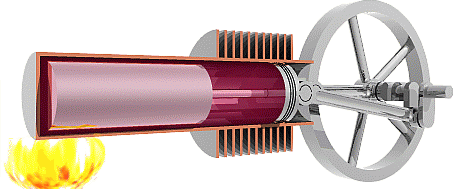Stirling engine

Problem
editStirling engines kits are built at the navy academy. Blocks of metal are machined by freshmen at MIT into a stirling engine. The reason is that they are the most efficient engine that exists. Building one looks easy, but most fail. The goal is to get a process so refined, that 50 intro to engineering students can build one at home .. with most materials found in a grocery store.
Conceive
editBuild stirling engines out of cans, wire, balloons, pens, foam .. stuff found at a grocery store. Develop instructions that anyone can successfully follow. Turn it into the second weekend exercise for an intro to engineering course.
Design
editCan designs have the most simple materials. There are many other designs.
Can Designs
|
|---|
|
HCC Starting point
|
|---|
|
- explain this quasiturbine version of a stirling engine
Implement
editStirling engines seem easy to build. Kits can be purchased that work the first time. Material lists are easy to make. There are two implementation problems:
- don't understand the theory of operation
- when doesn't work, the next steps are missing
- people that get stirling engines to work can not verbalize, take pictures and chop into fine detailed steps the solutions to the typical problems people encounter.
This is why the same specific design needs to be built by everyone. Don't let the parts one finds guide the design.
Operate
editMany overheat (burn up) their stirling engine in order to solve problems. A well designed stirling engine can run on the heat of a coffee cup or the heat of one's hand video.
Demo
editNext Steps
edit- develop presentable theory of operation
- start building a specific design and documenting failures
- source all the parts in the above design